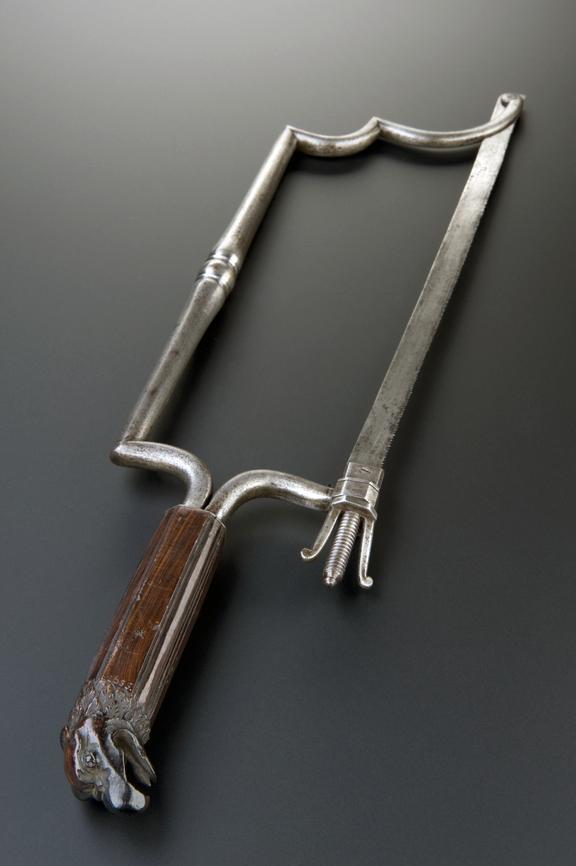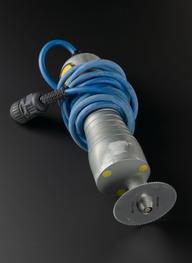


Bow-frame amputation saw, wooden handle terminating in eagle head, c. 1680
Made from steel with a mahogany handle designed as an eagle’s head, the amputation saw was used to cut through the muscle, skin and bone of a limb. Decorative handles like this one fell out of favour in the late 1700s as they were uncomfortable for surgeons to use and could unnecessarily damage skin and muscle tissues during the amputation. Unfortunately for patients, these decorative features also provided a good environment in which germs could thrive.
Until the introduction of anaesthetics in the 1840s and 1850s, surgical amputation was something of a last resort and was performed with no, or very limited, pain relief.
Details
- Category:
- Surgery
- Collection:
- Sir Henry Wellcome's Museum Collection
- Object Number:
- A85252
- Materials:
- blade, steel, frame, steel and handle, mahogany
- type:
- amputation saw




